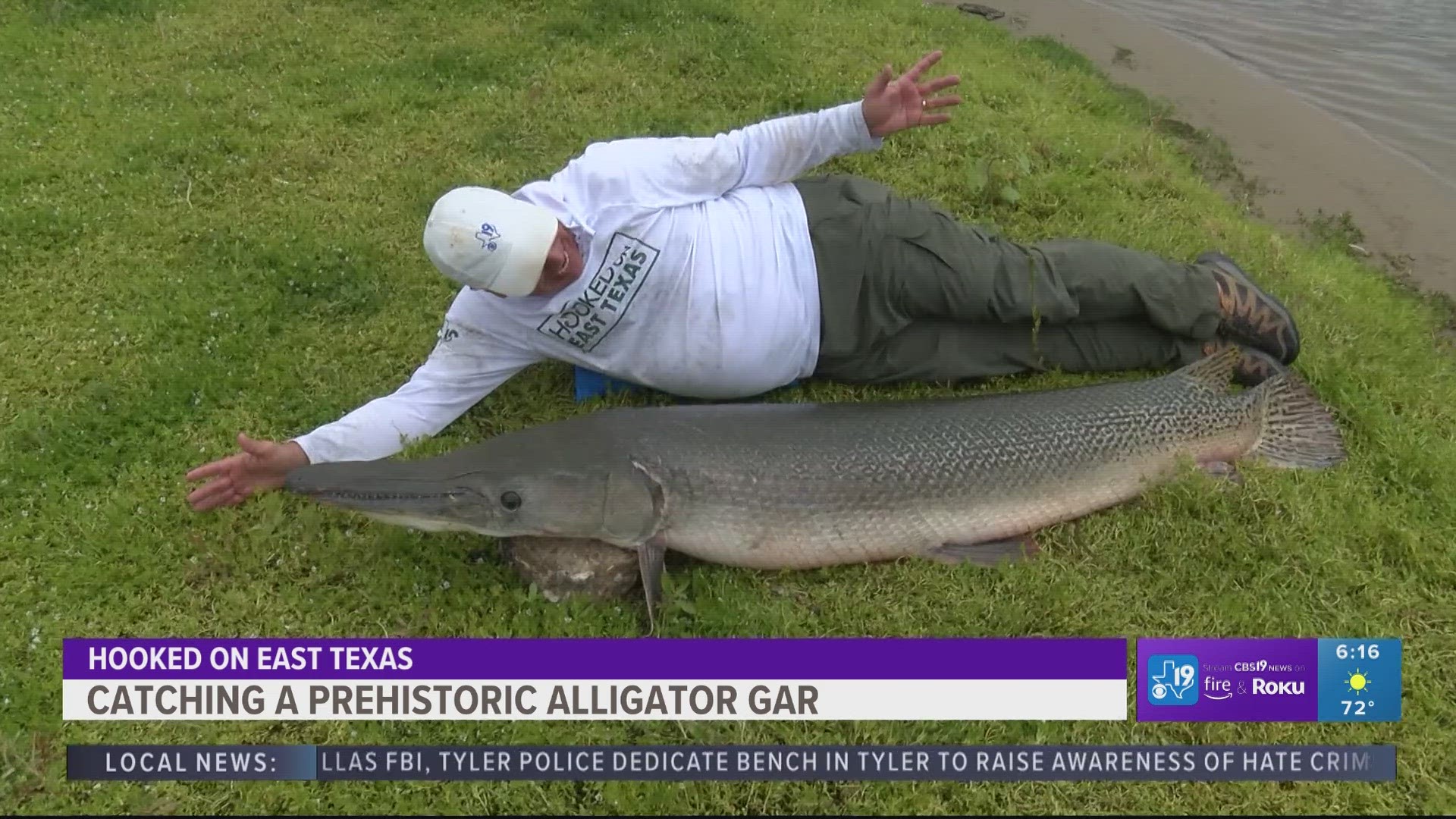LIVINGSTON, Texas — On this week's Hooked on East Texas, we take you on an adventure in search of a prehistoric fish on the Trinity River.
We traveled with Alligator Gar guide Kirk Kirkland on the Trinity River where monster Alligator Gars lurk. This ancient fish has been around since prehistoric times, making them some of the oldest fish in Texas waters. Practically a dinosaur, Alligator Gars are big fishes with armored scales and a pronounced, intimidating snout.
Kirkland steers the boat on the Trinity River just below the spillway at Lake Livingston, just where we're fishing. We hope to catch a couple of these impressive creatures to learn more about them and conservation efforts to preserve their existence.
“They've been around over 100 million years. There are some fossils in the Smithsonian, I looked at them last year. Really impressive fossils from 65 million years ago of gar," Kirkland said.
Kirkland's boat is called the Gar-ship Enterprise, named by one of his clients who's a Star Trek fan. Our bait was buffalo carp that Alligator Gars love and it didn't take long to get a bite. Kirkland described what the fish was doing once it picked up our bait.
“This fish is running, going toward the dam. And what he's doing is trying to kill it, get away from these other fish and kill it," Kirkland said. "Then when he thinks he's got to kill, he'll stop and he'll just kind of lay down. He'll sit there for a little bit and you'll see the reel stop spinning in a minute."
When the reel starts spinning again, Kirkland says to set the hook and the adventure begins. The fight is impressive but our 150-pound test line holds and it’s exhilarating to bring this fish on the boat. Our first catch of the day is a 65-pound gar but we’re not keeping it. Pictures last longer and this is all about catch and release.
“So, you know, anytime we can put these fish back and save them for future generations, that's what we're trying to do," Kirkland said.
But we’re not done. We catch smaller gar and release these. This is all about conservation because Gar doesn’t spawn every year like other freshwater fish. They only spawn when the rivers flood into the grass and trees.
“So you have to turn anything this size back a loose which protects our older slow-growing females that are you know, might not spawn but once every five or 10 years," Kirkland said.
We catch another and before releasing, it's time for a science lesson. We look inside the Gar’s mouth.
"That's their tongue right there and they have two rows of teeth in their top jaw. You can see right there and then one row of teeth and the bottom jaw. You can really see it there. And that's the tongue that they turn everything with. Okay, and these teeth actually go through the top jaw. Okay, we got one more go," Kirkland said.
Kirkland said one more to go because he has never made a TV appearance or been part of an article without catching a 100-plus-pound gar. Does our last cast of the day deliver?
We get a final bite and when it rolls on the surface, we know it’s big! It’s so big it takes a lasso to bring it on board. Gar can live up to four hours out of the water. We take it to a nearby shoreline to document the catch. We saved the best for last Kirkland said this Alligator Gar is 80 inches long and it weighs in at a whopping 120 pounds.
But like the other Alligator Gar, we release this catch of a lifetime back into the Trinity River to give another angler a memorable day on the water.

